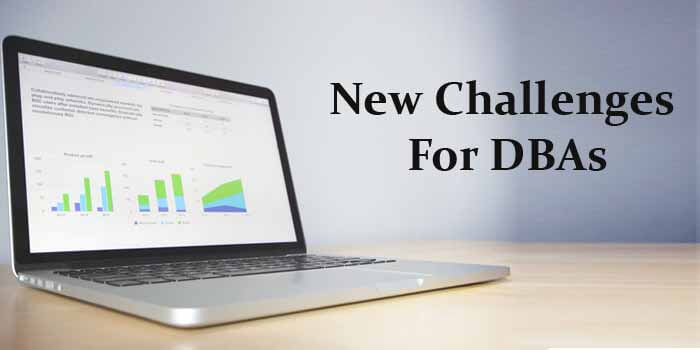As of late, information and data have been recognized as the most valuable assets for businesses. With this, DBAs or database administrators have now become the key players in business administration. And also they are also considered to be the guardians of the critical business asset. The primary responsibility of database administrators is ensuring data security, accuracy, proper storage, management, and retrieval of data.
It is DBAs role to ascertain that the business organizations. They represent have the capacity to meet up with the data needs to ensure that the database delivers optimum performance. It is also essential to back up the data properly to overcome the threat of any data loss or breach. If any sort of a database-related problem occurs, then DBAs have to resolve the issues without damaging the data. At the time of system failure the DBAs are responsible for preventing any data loss and to recover it.
The most expected change in DBA – Open source database
Even it’s not a technology which is creating a lot of buzz, and media-hype like the front-end technologies. Database is surely one of the most crucial aspects when it comes to its need for always-on and always-connected nature. Databases not only power the application and web pages. But also nowadays get practical insight and strategic business intelligence directives through data-driven insights. The internet also relies on properly functioning databases.
We have witnessed a lot of changes in the database landscape last year, and now we have to look forward to 2019 and see what is waiting to get off the shelf. One important thing to note in terms of database administration is the shift to open source solutions in database administration. This move is evident in the enterprise markets too.
In fact, even though there are objections in terms of adoption of an open-source database, it makes sense to many. Most of them say that the pluses of open-source DBMS largely outweigh the downsides in terms of flexibility and cost-effectiveness.
Obviously, this trend is moving towards open-source DB environment. Which requires no maintenance or on-premise infrastructure, but it could be more likely DBaaS (database-as-a-service) kind of deployments. Enterprises want flexibility and mobility when it comes to using business applications, and the same amount of mobility is now essential for the database environments too.
The approach of open-source database management is more or less a herd-versus-cattle model, which seems to be an apt analogy. The herd can be maintain constantly with close supervision to function correctly, and consistently verify. However, cattle have to be just count, and they can perform their functions by just being existing with little chance of oversight.
Even if cattle fail, it won’t derail the farm operations. Previously, the desired mobility for business was challenging with the need to implement complex databases. These conventional databases must be care for as like pets, but businesses now want simplicity to meet their needs quickly without demanding them to dedicate time for it.
DBaaS approach
As Remote DBA.com points out, we can now see that this change now pay way to an exponential growth in PaaS (platform-as-a-service) and DBaaS engagements and all leading players are coming up with their own customizable solutions like Amazon DBMS, Microsoft Azure, and Google Cloud, etc.
Another big move in terms of database simplicity is towards the establishment of serverless architectures. This refers to the maintenance of applications which largely depend on the third-party services which are known as BaaS (backend-as-a-service).
These may also consist of codes which run in some containers. BaaS is alternatively known as FaaS (Function-as-a-Service) too. These types of environments may help reduce the overall operational cost and simplify the DBMS process even though these may increase the vendor dependency.
Above these, we may also see that ‘12-factor application model’ may also be playing a crucial role in database management environments. With more DBaaS powered applications are into the picture, we may require further performance guarantee and standardization of such services.
The latest 12-factor methodology for structuring the SaaS applications is deem is suitable for the deployment of it on advance cloud-base platforms, which will eradicate the need for on-premise and remote servers as well as systems administration.
Cloud database
No predictions of our times can ignore the importance of the cloud. As we have seen over the last couple of years, Cloud-based database management solutions will continue to grow in 2019 also and will cover more of the database landscape.
Flexibility, cost-effectiveness, and mobile cloud platforms put forth are irresistible to enterprises of all sizes with scalable database management needs.
To a great extent, the cloud reduces maintenance and management overheads for the organizations. In fact, if you ask about the downsides of cloud, there are a few dangers also out there. Some of such concerns are about proper support, over-under provisioning, and some ballooning costs.
When it comes to cloud, it not just the Amazon Relational Databases, but there are Microsoft Azure, Google Cloud, Rackspace Cloud Hosting, etc. among other services.
The increasing shift to the cloud; however, may put some additional pressure on the database vendors too on the licensing models. In the case of permissive licenses, it is good for cloud services but may prove out to be bad for vendors.
On the other hand, AGPL-licenses may be good for the vendors, but not ideal for the cloud. However, as more and more enterprises are looking forward to the benefits of the cloud. There may be amicable solutions coming up for such licensing issues.
Containerization
One another key-term we have to pick up from the above discussion is containerization. We can consider containers as a lightweight alternative to complete virtualization. By letting an application run in a container to house the environment, it can offer almost all benefits of the virtual machine even though the applications may run on physical machines without the risk of any dependencies.
We have seen how open-source Docker gained prominence in containerization. They can run on almost everything ranging from computers, bare-metal servers, virtual machines, OpenStack cloud, etc.
Apart from Docker, there are many other specialize solutions too in term of containerization as LXC, CoreOS’s Rocket, Project Atomic to name a few. Ubuntu also has announced their LXD container engine for Linux and Windows Server also come up with the counterparts as Spoon and Drawbridge.
Considering all these, we can see that the database landscape is largely changing to adapt to the customize needs of future generation enterprises and businesses. This trend is rightly towards ensuring more flexibility and cost-effective operational models. All these businesses requirements may further change the open-source DBMS environment seamlessly in the coming days.




